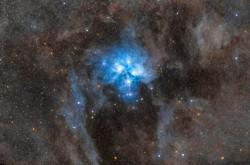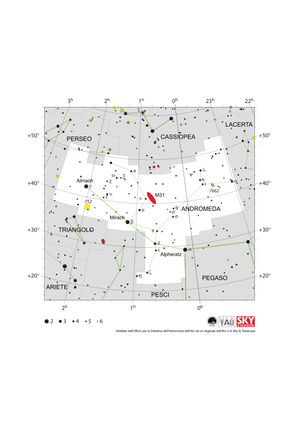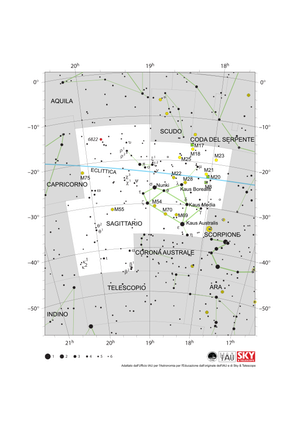Termine del Glossario Ammasso aperto
Descrizione Gli ammassi aperti sono ammassi di stelle presenti nella nostra Via Lattea e in altre galassie. Si pensa che siano il risultato di un singolo evento di formazione stellare e possono essere composti da molte centinaia, o addirittura migliaia di stelle. Gli ammassi aperti sono gravitazionalmente molto meno legati rispetto agli ammassi globulari e, nella Via Lattea, si trovano in genere nel disco galattico. Questo legame allentato fa sì che nel corso di centinaia di milioni di anni gli ammassi aperti si dissolvano gradualmente nella popolazione stellare generale della Via Lattea. In quanto gruppi di stelle che condividono un'età comune, gli ammassi aperti sono laboratori ideali per studiare l'evoluzione stellare. Le Pleiadi sono forse l'ammasso aperto più famoso del cielo.
Termini correlati
- Disco galattico
- Ammasso globulare
- Via Lattea
- Ammasso stellare
- Evoluzione stellare
- Popolazione stellare
- Pleiadi
Vedi questo termine in altre lingue
status del termine e della definizione La definizione originale di questo termine in inglese é stata approvata da un ricercatore astronomo e da un docente La traduzione di questo termine e della sua definizione sono state approvate da un ricercatore astronomo e da un docente
Il Glossario Multilingue OAE é un progetto dell'Ufficio IAU per la didatticadell'astronomia (OAE) in collaborazione con l'ufficio IAU OAO per la DivulgazioneAstronomica (OAO). I termini e le definizioni sono stater scelte, scritte eriviste da un impegno collettivo da parte di OAE, i Centri e i Nodi OAE e iCoordinatori Nazionali per la Didattica dell'Astronomia e da altri volontari.Potete trovare una lista completa dei crediti, Tutti i termini del glossarioE le definizioni sono pubblicate su Creative Commons CC BY-4.0 licenza e dovrebbero essere accreditate ad IAU OAE.
Se noti un errore di fatto o di traduzione in questo termine del glossario, per favore contattaci.
File multimediali correlati
Le Pleiadi M45 con polvere maestosa
Crediti: Mohamed Usama/IAU OAU
License: CC-BY-4.0 Creative Commons Attribuzione 4.0 Internazionale (CC BY 4.0) icone
Diagrami correlati
Mappa della costellazione di Andromeda
Crediti: Adattato dall'Ufficio IAU dell'astronomia per l'educazione dall'originale di IAU/Sky & Telescope
License: CC-BY-4.0 Creative Commons Attribuzione 4.0 Internazionale (CC BY 4.0) icone
Mappa della costellazione dello Scorpione
Crediti: Adattato dall'Ufficio IAU di Astronomia per l'educazione dall'originale di IAU/Sky & Telescope
License: CC-BY-4.0 Creative Commons Attribuzione 4.0 Internazionale (CC BY 4.0) icone
Mappa della costellazione del Sagittario
Crediti: Adattato dall'Ufficio IAU per l'Astronomia per l'Educazione dall'originale di IAU/Sky & Telescope
License: CC-BY-4.0 Creative Commons Attribuzione 4.0 Internazionale (CC BY 4.0) icone
Mappa della Costellazione dell'Acquario
Crediti: Adattato dall'Ufficio IAU ai Astronomia per l'educazione dall'originale di IAU/Sky & Telescope
License: CC-BY-4.0 Creative Commons Attribuzione 4.0 Internazionale (CC BY 4.0) icone
Crux Constellation Map
Crediti: Adapted by the IAU Office of Astronomy for Education from the original by IAU/Sky & Telescope.
License: CC-BY-4.0 Creative Commons Attribuzione 4.0 Internazionale (CC BY 4.0) icone














